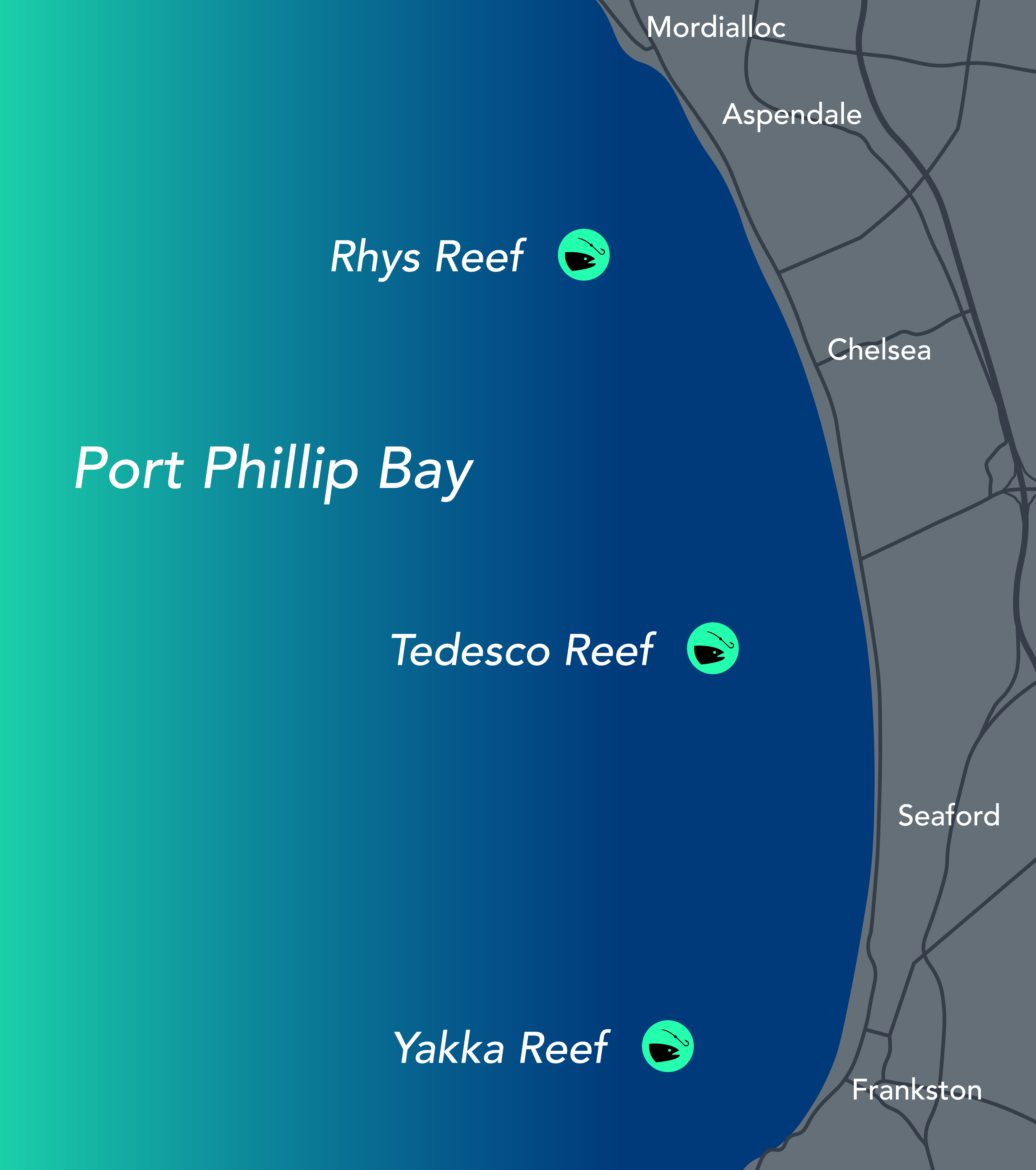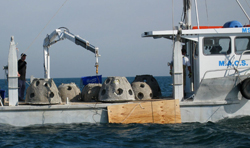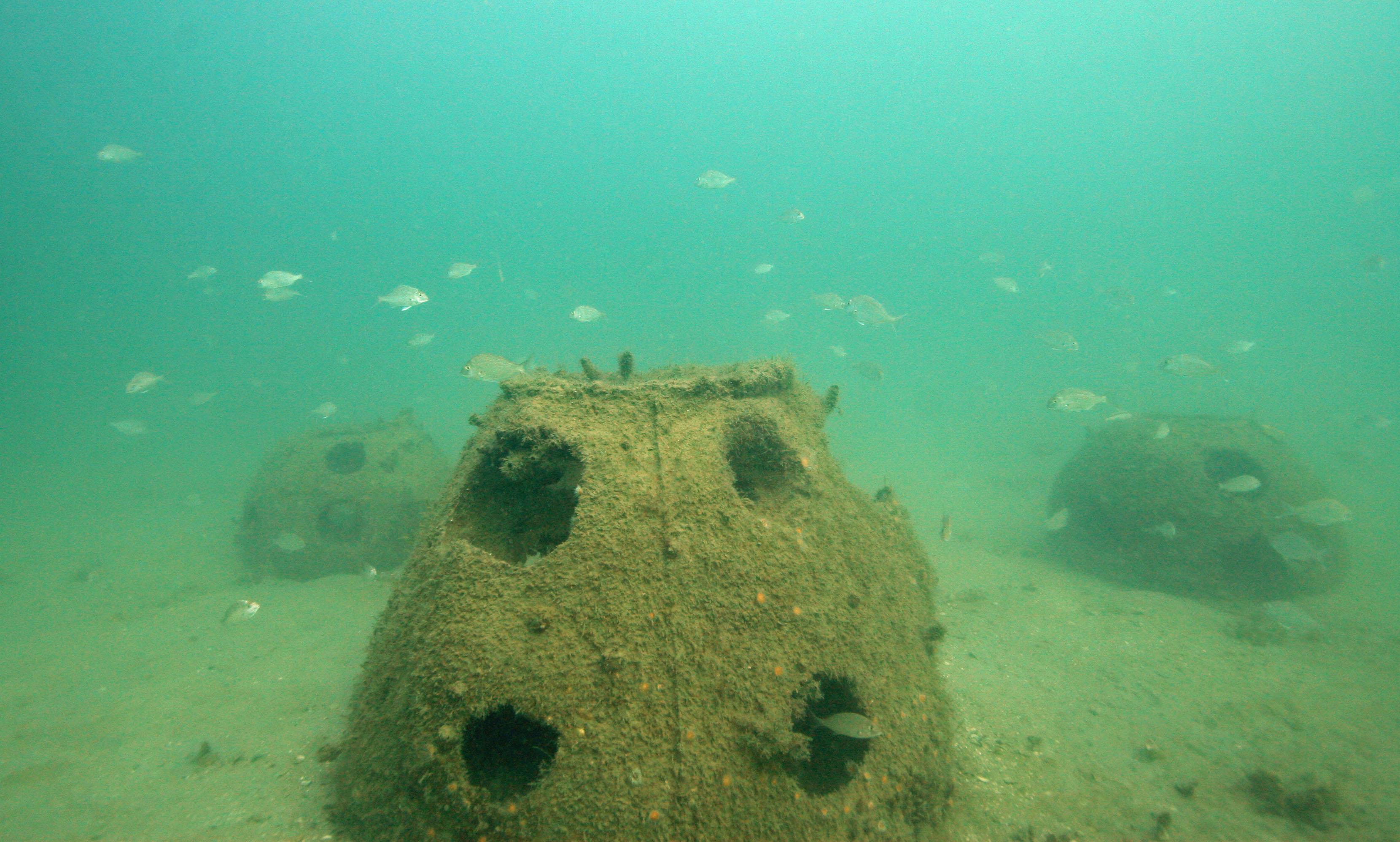Boat Based Reefs



The first recreational fishing reefs placed in Victorian waters were installed in May 2009 with the aim of improving fish habitat and enhancing recreational fishing opportunities.
The three reefs were deployed in a water depth of 11 metres, approximately 2 kilometres out from Aspendale, Seaford and Frankston.
A public competition was held during Easter 2009 to name the reefs.
Since their installation, the reefs have provided excellent fish habitat and fishing for recreational fishers for species such as snapper, King George Whiting and calamari.
Rhys Reef
The reef at Aspendale was originally named Rec Reef to highlight the use of these reefs to improve recreational fishing.
In April 2023, ‘Rec Reef’ was renamed ‘Rhys Reef’ to honour Rhys Gillard, a young recreational fisher who unexpectedly died from a sudden cardiac arrest in May 2021 (aged 17).
The reef was Rhys’ favourite spot to fish from his kayak. He spent many happy hours fishing the reef with his brother and friends.
To view the sign installed at the Mordialloc Foreshore to honour Rhys Gillard and more about Rhys’ story, please click here.
Rhys reef GPS marks:
| Site | Description | Latitude | Longitude |
|---|---|---|---|
| Aspendale | Far North Pallet Ball | 38° 02.152' S | 145° 04.616' E |
| Aspendale | Far East Pallet Ball | 38° 02.168' S | 145° 04.636' E |
| Aspendale | Far South Pallet Ball | 38° 02.184' S | 145° 04.615' E |
| Aspendale | Far West Pallet Ball | 38° 02.167' S | 145° 04.596' E |
Tedesco Reef
The reef at Seaford is named Tedesco Reef after Neil Tedesco who died in a diving accident in 2009, age 31.
Neil was a devoted fisher and diver and an ambassador of these sports.
| Site | Description | Latitude | Longitude |
|---|---|---|---|
| Seaford | Far North Pallet Ball | 38° 05.229' S | 145° 05.954' E |
| Seaford | Far East Pallet Ball | 38° 05.246' S | 145° 05.974' E |
| Seaford | Far South Pallet Ball | 38° 05.261' S | 145° 05.953' E |
| Seaford | Far West Pallet Ball | 38° 05.245' S | 145° 05.934' E |
Yakka Reef
The reef at Frankston is named Yakka Reef after the growing popularity of kayak fishing and the reefs accessibility to small craft.
Yakka reef GPS marks:
| Site | Description | Latitude | Longitude |
|---|---|---|---|
| Frankston | Far North Pallet Ball | 38° 08.467' S | 145° 05.480' E |
| Frankston | Far East Pallet Ball | 38° 08.483' S | 145° 05.500' E |
| Frankston | Far South Pallet Ball | 38° 08.499' S | 145° 05.479' E |
| Frankston | Far West Pallet Ball | 38° 08.482' S | 145° 05.459' E |
A Fisheries Notice excludes commercial fishing around the three reefs.
